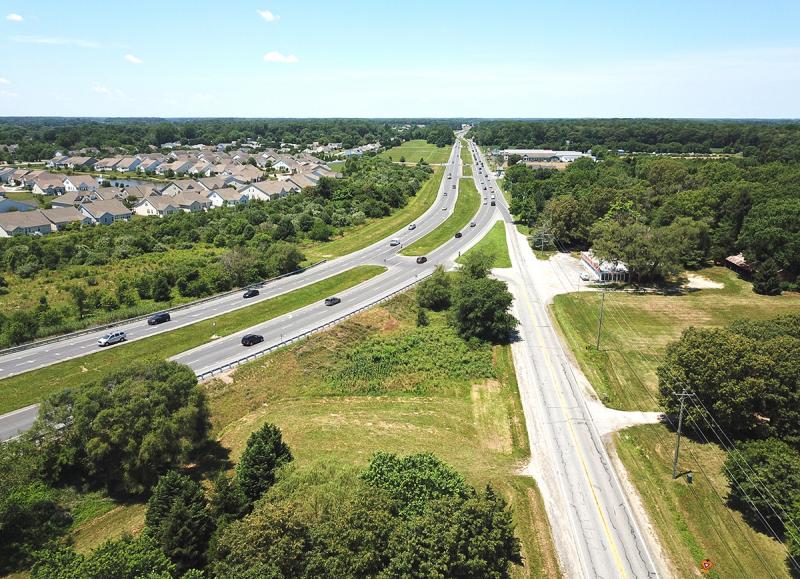DelDOT: Road projects will not be a Five Points bypass
Planned road improvements in the Five Points area are not expected to cause major changes to traffic patterns near Lewes, Department of Transportation officials say.
Development is another story.
Jeff Riegner, traffic engineer with DelDOT consultant Whitman, Requardt and Associates, said fears that DelDOT is creating a Five Points bypass are unfounded.
His team analyzed seven scenarios under existing traffic patterns and after completion of projects near the Nassau Bridge and Old Orchard Road. He said the studies show a slight increase in use, but not an avalanche of drivers seeking alternate routes. He said DelDOT's projects are about safety, not traffic control.
“Through traffic is designed to be on arterial highways, so we have absolutely no interest in diverting through traffic to local roads,” he said.
Lewes officials requested the state study future traffic conditions in the wake of recently unveiled road projects. Officials and residents expressed dismay at a July 1 presentation that the study failed to show the impact of future residential and commercial growth, and planned improvements to New Road.
In design now is a project to realign Old Orchard Road at Savannah Road, near Walgreens. The plan is to move the road’s intersection east to align with Wescoats Road. Construction is slated to begin in 2022.
Another major project in the pipeline is the overhaul of the Route 1 traffic pattern around Minos Conaway Road and the Nassau Bridge. The plan is to build a road under the Nassau Bridge on the former railroad right of way connecting at a roundabout at the intersection of Nassau Road and New Road. Service roads would run parallel to Route 1 northbound and southbound, eliminating dangerous crossovers north and south of the bridge.
On an average summer day, Riegner’s team estimates Old Orchard Road traffic will increase by about 200 vehicles. In terms of a bypass, he said, it’s unlikely people will see it as a viable alternative route.
“It’s a half-mile longer than taking Route 1, and it’s expected to take about two-and-a-half minutes longer southbound and about three minutes longer northbound,” he said. “At noon on a Saturday in the summer, you may see some diversion. But on an average summer day, I don’t expect that you will.”
Councilwoman Bonnie Osler focused on peak traffic situations where Route 1 is backed up past the Nassau Bridge. “I’m not a traffic engineer. I just live here,” she said. “My experience tells me that you’re underestimating the effect of people trying to find their way around those solid red lines on Google Maps. People will do things that are not necessarily rational in hopes of not sitting in traffic.”
Riegner said the model his team used estimates future conditions based on the most advanced tools and best available data. “We’re trying to predict the future,” he said. “If we could predict the future with accuracy, we would be trading stocks rather than doing transportation planning.”
The team used average summer daily traffic collected for all days in June, July and August in 2017.
Resident Gail van Gilder, who previously served as chair of the Historic Lewes Byway, agreed with Osler that something was amiss in the way the numbers were calculated. “From living here and seeing what we’re seeing on the roads today, it’s hard to believe that it’s that small of an impact,” she said. “Something is wrong with the picture.”
One takeaway from the study, Riegner said, is that transportation projects have less impact on traffic than development.
The model included existing development and anticipated development in its base traffic numbers. Findings focused only on increased traffic numbers resulting directly from the two transportation projects.
Lewes officials and residents said the study was short-sighted because it failed to include existing traffic conditions and an estimate of future numbers post-development. The model considered existing zoning, and did not anticipate any upzoning.
Council asked DelDOT to consider further study to include only weekend traffic, continued growth in Sussex County areas outside Lewes, the effect of added commercial properties, future planned improvements to New Road and the impact of all these factors on failing or near-failing intersections.
Riegner said the goal of the study was to answer Lewes’ specific concerns about the impact of DelDOT’s transportation projects. It wasn’t to analyze the effect of development on traffic. However, he said, DelDOT is expected to further study traffic changes in the Lewes area.


























































